“The distinction between science and mathematics had only been clarified in the late nineteenth century. Until then it might be supposed that mathematics necessarily represented the relations of numbers and quantities appearing in the physical world, although this point of view had really been doomed as soon as such concepts as the ‘negative numbers’ were developed… Mathematical symbols became less less and less obliged to correspond directly with physical entities.”
— Andrew Hodges (in Alan Turing: The Enigma)
[The image above is taken from Lee Smolin’s book The Trouble With Physics. However, none of the quotes in this essay are from that book - they’re mainly from his The Life of the Cosmos. That said, this essay does highlight what Smolin takes to be the trouble with physics.]
The American theoretical physicist Lee Smolin (1955-) argues that the belief in the intrinsically mathematical nature of Nature (or reality) “is the private religion of the theoretical physicist”. Smolin’s words can be taken to be hinting at a contemporary kind of Pythagoreanism when it comes to such physicists. And, of course, it’s a historical fact that the early — as well as later — followers of Pythagoras (c. 570 — c. 495 BC) were members of various religions or (depending on one’s views) cults (see here).
The Unreasonable Effectiveness of Mathematics

Lee Smolin refers to “the obvious effectiveness of mathematics in physics”. That is a statement about the pragmatic utility of mathematics when it comes to physics. Or, to use Eugene Wigner’s oft-quoted words, Smolin is basically referring to “the unreasonable effectiveness of mathematics in the natural sciences”.
We can all happily accept the unreasonable effectiveness of mathematics in physics.
But where do we go from there?
Smolin himself goes on to state that he has
“never heard a good a priori argument that the world must be organised according to mathematical principles”.
So Smolin has “never heard a good a priori argument” on this subject - despite the obvious effectiveness of mathematics.
Again: mathematics is useful — extremely useful — in physics. So much so that there could hardly be any modern physics without maths. That said, it still can’t be concluded from this effectiveness that (to use Smolin’s words again) “the world must be organised according to mathematical principles”.
In other words, the unreasonable effectiveness of mathematics doesn’t mean — or have the consequence — that the world itself is [or must be] organised according to mathematical principles. Of course it gives physicists reasons — even very good reasons — to believe that. However, the effectiveness of mathematics in physics — alone — doesn’t have the (logical) consequence that the world itself must be organised according to mathematical principles.
More specifically, when Smolin uses the words “a good a priori argument” (or simply when he uses the epistemological term “a priori”) he seems to be saying that many physicists simply assume that Nature is mathematical precisely because of the unreasonable effectiveness of mathematics in physics… or, indeed, vice versa.
So this is close to being a circular position. Thus:
(1) Mathematics is unreasonably effective in physics because the world itself is mathematical.
(2) Because the world is mathematical, it follows that the mathematics in physics will be unreasonably effective.
Later in the same chapter Smolin goes on to be even more explicit about these assumptions when he writes the following words:
“[W]hat is both wonderful and terrifying is that is absolutely no reason that nature at its deepest level must have anything to do with mathematics.”
At first sight, this seems like an incredible claim.
Or at least one would presume that most — or even all — physicists would have (deep?) problems with Smolin’s statement. But that shock may — again - simply be down to the false inference (which many physicists make) from the the unreasonable effectiveness of mathematics to the conclusion that nature itself (“at its deepest level”) must be mathematical.
To repeat: we have the following line of reasoning from mathematical and theoretical physicists:
(1) Mathematics is unreasonably effective in physics.
(2) Therefore the world itself must be organised according to mathematical principles.
(Not that all or even most physicists actually express — or even think about — these issues.)
But isn’t the above like making the following (admittedly much weaker) claim? —
(1) Cement is unreasonably effective when it comes to building houses.
(2) Therefore houses must be built on cement-based principles.
Pythagoreanism or Platonism?
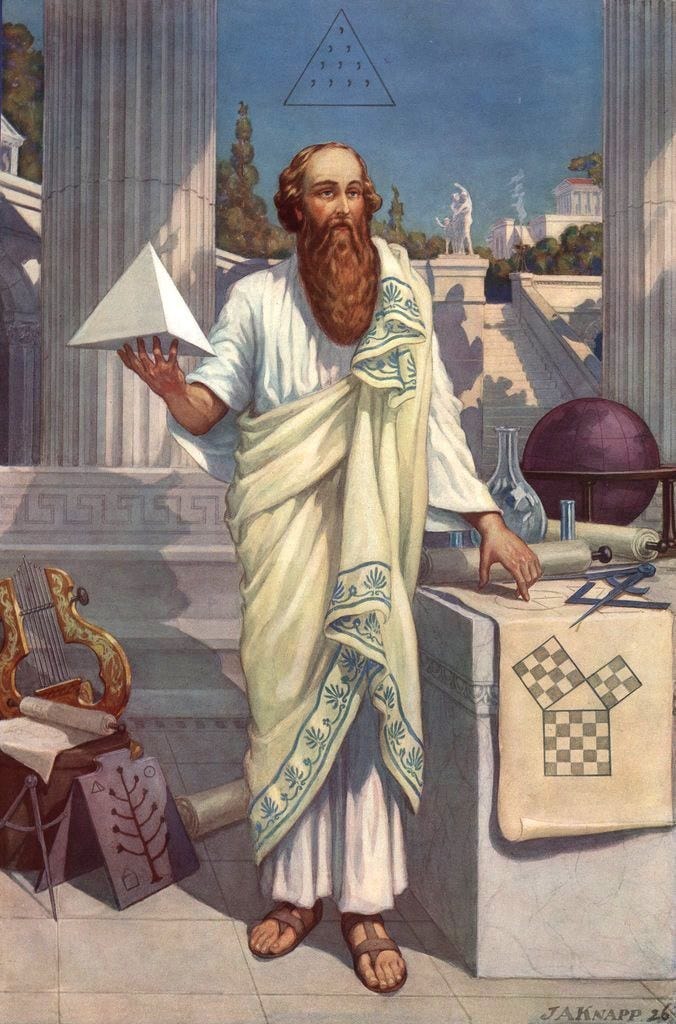
The distinctions that shall now be made between Platonism and Pythagoreanism may be mere semantics. I say that because they may only amount to differences which don’t really make (much of a) difference.
But here goes.
Platonists stress the abstract world of mathematics and its complete separation from what’s often been called “the sensible”. On this reading at least, that would mean that mathematical and theoretical physicists gain hold (or, to use Roger Penrose’s word, “see”) these “perfect mathematical form[s]” in Plato’s domain, and then they simply make use of them to describe, explain or even (to use Smolin’s word) “mirror” Nature.
Pythagoreans, on the other hand, believe that such perfect mathematical forms are actually instantiated in nature — not a mere “reflection” of anything in the Platonic realm.
Thus Platonists have traditionally played down the sensible world and stressed the abstract world of mathematics. Pythagoreans, on the other hand, have discovered mathematics — and even “perfect forms” — within nature itself and thus never felt polluted by investigating (sensible) Nature.
Plato’s overall philosophy can also be read as not being primarily about numbers; whereas Pythagoras’s philosophy (or religion) was. That is, Pythagoras was far more concerned with showing the mathematical nature of the world (or Nature) than Plato. For Plato, indeed, mathematics has its own abstract world — which the physical world merely “copies”.
Thus it is easier to note a Pythagorean position in mathematical and theoretical physics than in pure mathematics. Similarly, it’s easier to note a Platonic position in pure mathematics than in mathematical and theoretical physics.
Despite all that, I must freely admitted that I’m not a scholar of either Plato or Pythagoras. Thus what I argue may only be a case of my own personal take on the two philosophers. So, even if my interpretative distinctions between Platonism and Pythagoreanism are incorrect, the distinctions I make are still real and — I believe — they still make a difference. Again: that’s the case even if my distinctions don’t accurately capture the actual historical differences between the two philosophers.
To put all that in very basic terms: I’m not a historian of philosophy.
Smolin’s Own Position on Pythagoreanism & Platonism
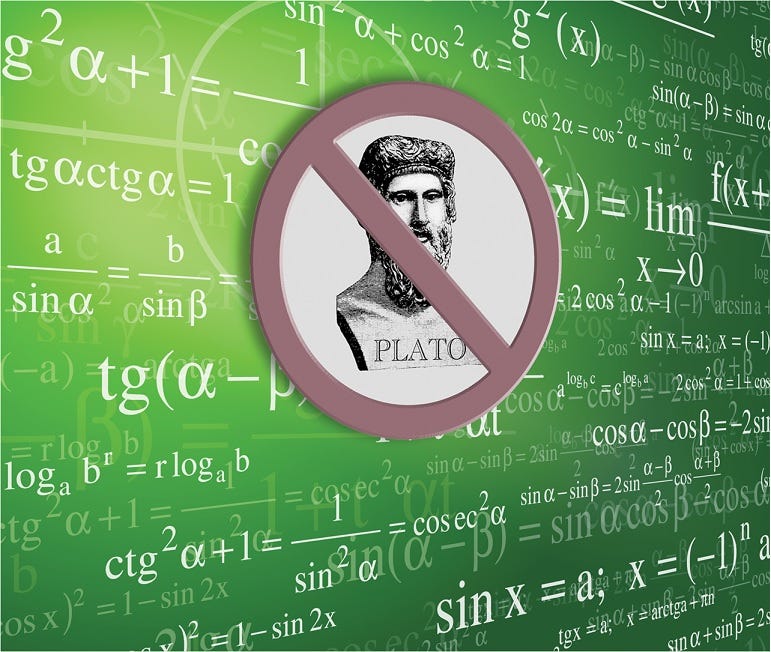
In the words above there was an attempt to make a distinction between Platonism and Pythagoreanism. And Smolin himself also gets to the heart of the issue of the relation between mathematics and reality — as it relates to both Platonism and Pythagoreanism.
To use Smolin’s own words to put the mathematical Platonist’s position: “appearances” are deceptive — even in physics. They’re also thoroughly contingent. So what underlies our physics is a “transcendent reality” — and that reality is entirely (or purely) mathematical.
Of course Plato famously warned us against accepting (mere) appearances. Yet Smolin’s words aren’t only about the appearances Plato warned us against.
Smolin — as I read him — is also referring to appearances as they’re found in physics itself. That is, Plato warned us — in his famous allegory of the cave — against taking the shadows on the walls to be real beings (or things). Yet the position Smolin is tackling has it that even the physical properties, events, etc. mentioned in physics are themselves stand-ins for the mathematics which underpins them.
So this means that laypeople can be just as easily fooled by the appearances offered by physicists as the prisoners in Plato’s allegory were fooled by the shadows on the wall.
That said, one problem is that Smolin seems to (more or less) fuse Plato and Pythagoras. Take the following example. Smolin writes:
“From Pythagoras to string theory, the desire to comprehend nature has been framed by the Platonic ideal that the world is a reflection of some perfect mathematical form.”
It can be argued that contemporary Pythagoreans would say that mathematics is actually instantiated in nature rather than our mathematical physics being (merely) “a reflection of some perfect mathematical form”. Pythagoreans may even argue that (as with Pythagoras himself) “the world is number” — as does, for example, Max Tegmark (see here). Indeed Smolin himself comments on that (supposed) literal identity between “reality” and mathematics when he mentions what he calls “[t]he mysticism of the mathematical”. He writes:
“[T]he belief that at its deepest level reality may be captured by an equation or a geometrical construction [].”
Yet it can also be argued that Smolin’s word “captured” works against Pythagoreanism in that saying that “an equation” captures an aspect (or part) of “reality” doesn’t appear to be the same thing as saying that an aspect (or part) of reality instantiates — or literally is — an equation. (Max Tegmark actually holds this position.)
Then there’s also another passage from Smolin which works against a purely Pythagorean reading. Smolin has it that
“the ambition then rises in our young scientist that he or she may be the one who invents the formula that is the true mirror of the world”.
Surely it would be the case that for a Pythagorean his mathematical “formula” wouldn’t be “the true mirror of the world” — it would be the world. That it, the formula would either be instantiated in the world or there would be a literal identity between formula and the world. Smolin’s words, therefore, chime in better with Platonism in that the physical world is seen to “mirror” (if often badly) the mathematics of Plato’s abstract world.
What’s more, how exactly could a mathematical formula “mirror the world”?
Consider here the many problems philosophers have noted with the (supposed?) “correspondence” between statements (or sentences) and facts; as well as the referential problems brought about by words and what words refer to or name. (See the Correspondence Theory of Truth.) Now is the mirroring of the world by formulas (equations) really that different? More relevantly, what is the precise relation between a “perfect mathematical form” in a Platonic realm and a physical part of the world?
As for reality being captured by an equation or a (to use Smolin’s words) “geometrical construction”.
It can now be said that even Stephen Hawking (1942–2018) came to argue (in the years just before his death) against the possibility of (to use Smolin’s words) “some [single] beautiful mathematical structure that will underlie reality”. Or, more accurately, since Hawking came to argue against the possibility of any “theory of everything”, then it would have been even more likely that he’d never have believed that there could be a single beautiful mathematical structure which described (summed up, “mirrored” or whatever) literally everything.
What would that even mean?
(This line of reasoning can be found in Hawking’s book The Grand Design and in the article Stephen Hawking says there’s no theory of everything | New Scientist.)
More specifically, even short — yet still powerful and wide ranging — equations are only short because they contain within them large amounts of tacit, implicit or simply missed out mathematical and physical information. Or, to put that differently, a short — yet still powerful and wide ranging — equation actually contains within it many other equations — most of which are represented by single symbols.
So, when you take this line of reasoning to its limit, then it’s no surprise that we could (to adopt and adapt a quote from The Hitchhiker’s Guide to the Galaxy) accept that “the answer to Ultimate Question of Life, the Universe, and Everything” is indeed the number 42!
Despite all the above, Smolin still hints at what can be taken to be the Pythagorean beliefs of many mathematical and theoretical physicists. He writes:
“Certainly, if one needs to believe that beyond the appearances of the world there lies a permanent and transcendent reality, there is no better choice than mathematics.”
The problem Smolin is highlighting (as already mentioned) is this:
(1) If one believes in the unreasonable effectiveness of mathematics in physics,
(2) and then moves from (1) to also believing that the world is organised according to mathematical principles,
(C) then it seems logical to conclude that the world itself is mathematical.
After all, if you have the efficacy of maths, along with the belief (or even fact) that the world (as it were) obeys mathematical principles, then it’s a (fairly) smooth ride from those positions to endorsing (even if only tacitly) some kind of Pythagoreanism.
Smolin’s Maths-to-World Examples
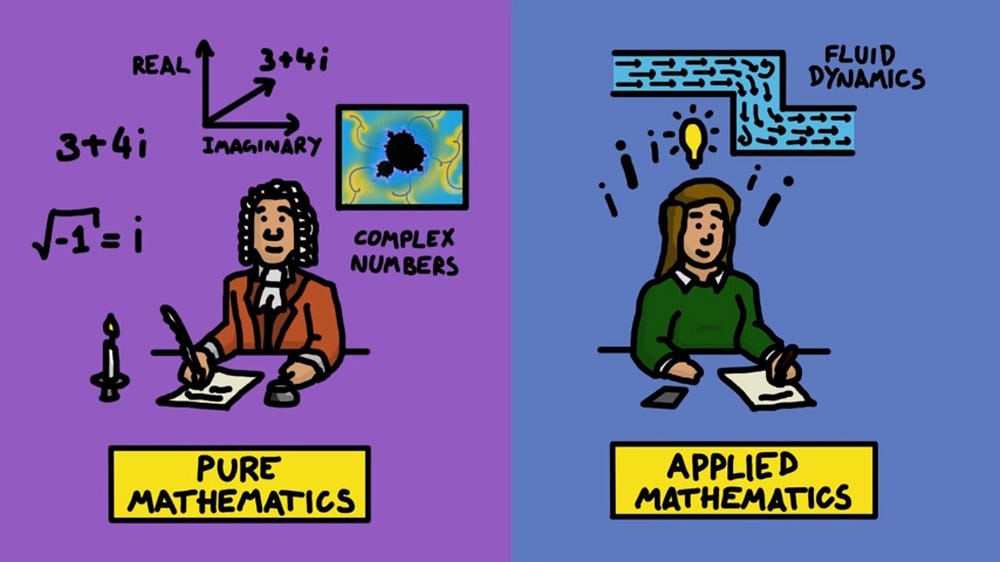
Smolin explains the strange and strong link between mathematics and the physical world — as well as the independence of mathematics — when he cites the case of
“a beautiful piece of mathematics [which was] first explored simply because it was beautiful, but later was found to represent a real phenomenon”.
Smolin then provides some examples of this phenomenon:
“This is certainly the story of non-Euclidean geometry, and it is the story of the triumph of the gauge principle, from its discovery in Maxwell’s theory of electrodynamics [].”
And, elsewhere, Smolin writes:
“The power of this dream is undeniable, as we can see from the achievements it inspired, from Kepler’s laws to Einstein’s equations. Their example suggest that the goal of theoretical physics and cosmology should be the discovery of some beautiful mathematical structure that will underlie reality.”
For a Pythagorean, however, that “beautiful piece of mathematics” wouldn’t “represent a real phenomenon”: it would actually be instantiated in (or even be) that real phenomenon.
A Platonist (at least on this reading), on the other hand, would luxuriate in the beauty of this piece of mathematics as it is in itself — without any wish to make is represent a real phenomenon. Indeed one can cite that supreme Platonist mathematician G.H. Hardy (1877–1947) here. Hardy would have been outraged had “some tiresome physicist [] come along and found a use for [his equation]”. Indeed Hardy once stated the following words:
“I have never done anything ‘useful’. No discovery of mine has made, or is likely to make, directly or indirectly, for good or ill, the least difference to the amenity of the world.”
Surely Hardy’s expressions above aren’t those of a Pythagorean because “the world of numbers”, the applications of mathematics (in physics and elsewhere) and indeed ethics were all very important to Pythagoreans. Mathematical Platonists like Hardy and others (if not Plato and Platonists generally), on the other hand, tend to have a much more rarefied view of these matters.
Smolin’s Darwinian and Wittgensteinian Philosophy of Physics
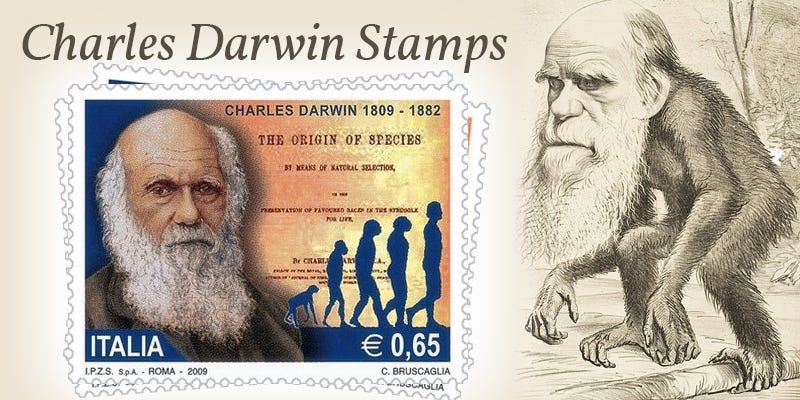
“[N]ot much of what happens in the natural world is governed in a systematic way, that it takes an enormous amount of effort in special background conditions in special circumstances before you get regular repeatable behaviour.”
— Nancy Cartwright (1944-) (see here)
One may now be wondering what Smolin’s own overall philosophical position is on the matters discussed above.
So take the following words:
“Each atom moves randomly, it is just the statistics of enormous numbers. Perhaps the greatest nightmare of the Platonist is that, in the end, all our laws will be like this, so that the root of all the beautiful regularities we have discovered will turn out to be more statistics, beyond which is only randomness or irrationality.”
That position on physics seems to be somewhat Darwinian in nature. That’s because the passage above emphasises randomness (as also in random mutations) leading to regularities (as also to determinate — at least for a time — species). That’s not a surprise because Smolin takes a Darwinian position on other elements in physics. It’s worth noting, then, his best known — and seemingly bizarre — Darwinian position on blacks holes and the nature of (in the plural) universes.
Smolin’s hypothesis is one of cosmological natural selection. In very basic terms, Smolin argues that a process similar to biological natural selection occurs at the cosmological scale. More specifically, Smolin argues that it is black holes which have a role in cosmological natural selection. That is, black holes give birth to new universes. These new universes have fundamental constants whose “parameters” may differ — if only slightly — from those of the universe in which the black hole collapsed. This also means that every universe will produce as many other universes as it has black holes.
And all this ties in with the evolutionary ideas “mutation” and “reproduction” — yet applied to black holes and their progeny (i.e., universes).
If we return to Smolin’s account of Platonism directly above.
There’s a certain degree of rhetoric in that passage. That is, I wouldn’t say that any element of “each atom” displays “irrationality”… or, for that matter, rationality. Indeed the Dutch philosopher Spinoza (1632–1677) once wrote the following words of warning about this anthropomorphic way of thinking:
“I would warn you that I do not attribute to nature either beauty or deformity, order or confusion. Only in relation to our imagination can things be called beautiful or ugly, well-ordered or confused.”
That said, Smolin may simply be expressing a Platonist way of looking at (in this case) atoms.
Now take some more Darwinian words from Smolin:
“This is perhaps one reason why biology seems puzzling to some physicists. The possibility that the tremendous beauty of the living world might be, in the end, just a matter of randomness, statistics, and frozen accident stands as a genuine threat to the mystical conceit that reality can be captured in a single, beautiful equation.”
[On the term “frozen accident” above: “The Frozen accident hypothesis assumes that the formation of the genetic code is an example of a frozen accident (Crick 1968) [] the genetic code was formed through a random, highly improbable combination of its components formed by an abiotic route…]
Here again we read Smolin referring to that “single, beautiful equation” which Stephen Hawking had doubts about. However, a Pythagorean theoretical physicist like Michio Kaku (1947-) is always dreaming of such of thing and very frequently mentions it. Indeed one suspects that Kaku believes that it may be himself that creates (or discovers) the equation. And that may at least partly explain why he’s written a book called the God Equation. (Won’t the discoverer of the God Equation be… God-like?) Indeed, according to Kaku himself, he’s been searching for a “theory of everything” since he was 8 years old.
In any case, although Smolin’s position on much of physics is Darwinian, his position on (pure) mathematics appears to be Wittgensteinian.
Wittgenstein
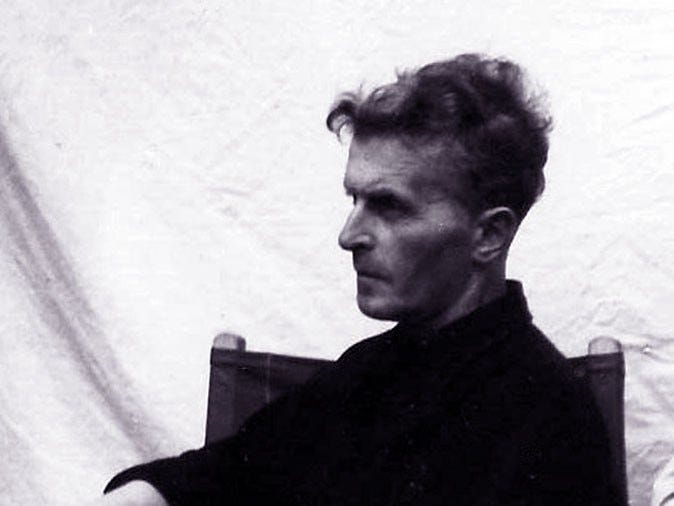
For an example of this, take the following very Wittgensteinian passage from Smolin. (I’ve no idea if Smolin has been influenced by Ludwig Wittgenstein because I only recall him writing about the Austrian philosopher on one occasion — here.) Smolin writes:
“Like mathematics itself, the faith in this shared mysticism of the mathematical scientist is an invention of human beings.”
Here Smolin explicitly states that “mathematics itself [] is an an invention of human beings”. This means that if maths is an invention of human beings, then there’s no reason at all to assume that reality (or the world) is intrinsically mathematical — let alone that equations (or formulas) are instantiated in (or identical to) parts of the world. Indeed Wittgenstein himself did make (fairly) similar points about these conflations of mathematics and the world. More specifically, Wittgenstein warned us against transferring what is applicable to (or true/false of) mathematical systems to the world itself.
As it is, Wittgenstein can be read as not actually questioning the logical validity or status of the mathematics. He was making a purely philosophical point about the (as it were) reading of mathematics into the world. Thus Wittgenstein’s position on mathematics and the world was largely down to his mathematical anthropocentrism. That is, to his belief that mathematics is a human invention. (More concretely, Wittgenstein once stated that “[w]e make mathematics”; and some time later he said that we “invent” mathematics.)
All the above means that if mathematics is a human invention, then any readings of maths into the world (or Nature) must be down to… us. And if they’re down to us, then these readings aren’t really telling us anything about the physical world — or even about a platonic world of numbers . And that’s simply because — according to both Wittgenstein and Smolin — such as thing doesn’t even exist.









No comments:
Post a Comment